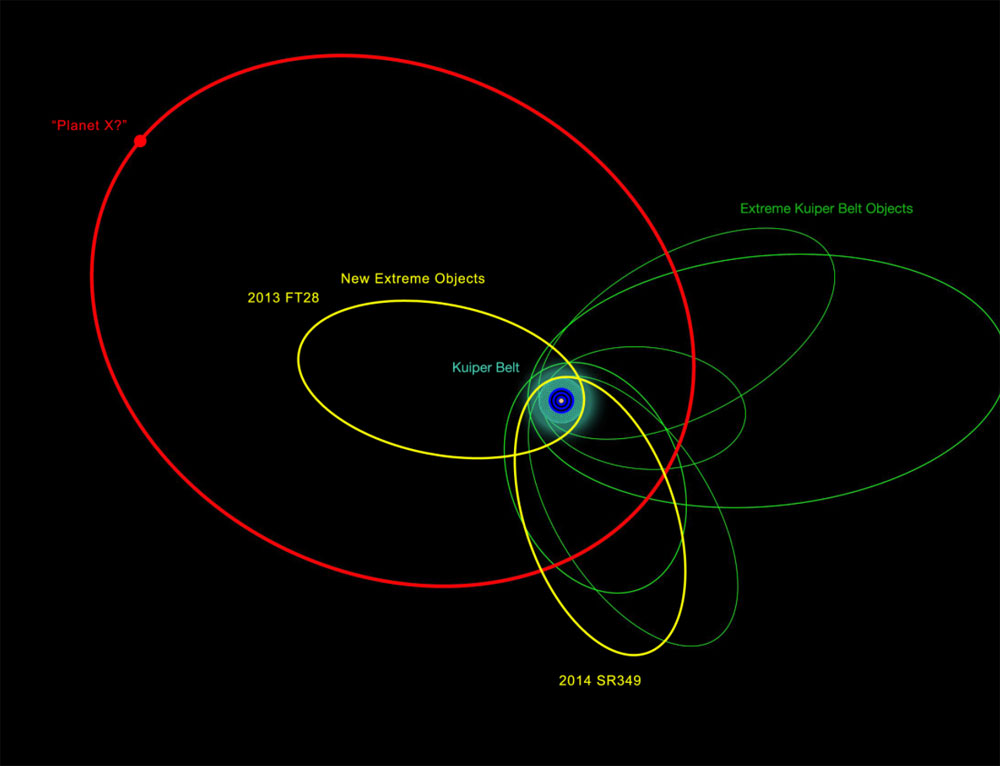Astronomy - Orbital Path Podcast: In Search of Planet 9
Astronomers are debating the existence of "Planet 9," a big planet beyond the orbits of Pluto and Neptune. Dr. Michelle Thaller talks with planetary scientists Scott Shepard and Mike Brown about if and when we'll discover it.
One of my favorite topics of the last decade has been the amazing richness and diversity of planets in our galaxy; planets around other stars, that is. The first planet outside our solar system was found a little over 20 years ago, and today we have over 3,400 confirmed exoplanets.
Closer to home, we have bragged that we have now visited all the planets of our solar system. But have we? It often surprises people that we may have a long way to go before our own solar system is fully explored, or even discovered.
For the last ten years, while we’ve been busy cataloging other solar systems, we’ve also discovered lots of smaller bodies outside the orbit of Neptune. A few are close to Pluto in size (one, Eris, is actually more massive than Pluto), and many smaller ones. In 2014, two astronomers, Chad Trujillo and Scott Sheppard, wrote a letter to the journal Nature stating that something was, well, a bit odd about the orbits of all the small, dark bodies recently found outside the orbit of Neptune. The orbits appeared to be oddly lined up; their perihelions (the closest approach to the Sun) were almost on top of each other in a similar part of the sky, instead of being randomly distributed as one might expect.
These small bodies didn’t have the mass to line each other up that way all by themselves, so the suggestion was made that a much more massive planet might be out there –way out there, maybe 30 times farther away than Neptune, exerting a gravitational pull to shepherd these objects into similar orbits.

Proposed mockup of our solar system (the sun is the tiny yellow dot in the middle), and the proposed orbit of Planet 9 (called Planet X here).
Scott Sheppard / Carnegie Institution of Washington
Scott Sheppard / Carnegie Institution of Washington
As often happens in science, the next step was an attempt to refute this idea. At Caltech, Mike Brown and Konstantin Batygin proved that most of these alignments could be explained by Neptune’s gravitational influence, but intriguing, not all of them. And those that were left over were even more aligned with each other.
Brown and Batygin then added in the orbits of six more farther out objects, and not only did these things all turn out to have lined-up perihelions, their orbits turned out to be in almost the exact same plane with each other. According to the Caltech group, there was only a 0.007% probability that this could happen by chance. Something unseen, soon dubbed "Planet 9," was tugging on these small bodies. And that something that had to be big; somewhere in the neighborhood of ten times the mass of the Earth.
I actually remember where I was and what I was doing when I heard this news. It astounded me that there might be a major planet, not just a small icy lump that we hadn’t discovered in our own solar system. To put it bluntly, this was a bit embarrassing. How had we managed to miss it? Yes, planets out past the orbit of Neptune, even large ones, are hard to find; small and dark in a telescope’s view. But really, this thing, if it is as large as we suspect, should have showed up in some of our past all-sky surveys. There may even be an image of it somewhere –a pixel or two in an existing astronomical archive.
And getting back to where I started (with exoplanets), this “new” planet, if it exists, might fill in an important missing piece to our solar system. As we’ve explored worlds around other stars, we’ve noticed that the most common sort of planet out there is one we don’t seem to have in our solar system. Planets in the mass range of 5 to 10 Earth masses, sometimes called “super-Earths” or “mini-Neptunes,” (we do not yet know if such planets are more similar to a large Earth or the core of a gas planet like Neptune) substantially outnumber other planets. Where is ours? Maybe we’ve finally found it in "Planet 9", perhaps flung out into a ludicrously distant orbit by a past encounter with another massive planet. Just waiting for us to finally include into our family of planets.
No comments:
Post a Comment